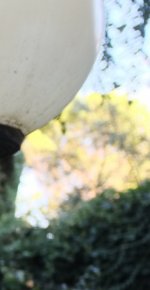PeterPrism
Member
This is a Jpg File done with my beautiful, loved and hated X-Pro1 & 18mm original fujifilm at:
f 3.6 - 1/160 sec - 800 ISO.(images resized due the site limitation).
This pic shows a strange (very ugly IMO) bokeh (see the enlargement below)
Can you please explain in optical terms:
(1) why it is present,
(2) what is it,
(3) if it is only a result of a digital camera or can be obtained also in an analog camera
(4) if it is a problem referred to the lens or to the sensor,
(5) if it is referred to the lens: do you think the zoom 18 --> 55 has the same problem?
(6) if it is referred to the lens: what do you think if I replace 18 & 35 for a new 23?
(7) how to prevent a future similar bad result ? [(obviously, don't tell me to reduce F-stop, I wish use the bokeh feature taking advantage of this fast (f 2) aperture lens)]
Thanks to you all X-Friends!
Peter
f 3.6 - 1/160 sec - 800 ISO.(images resized due the site limitation).
This pic shows a strange (very ugly IMO) bokeh (see the enlargement below)
Can you please explain in optical terms:
(1) why it is present,
(2) what is it,
(3) if it is only a result of a digital camera or can be obtained also in an analog camera
(4) if it is a problem referred to the lens or to the sensor,
(5) if it is referred to the lens: do you think the zoom 18 --> 55 has the same problem?
(6) if it is referred to the lens: what do you think if I replace 18 & 35 for a new 23?
(7) how to prevent a future similar bad result ? [(obviously, don't tell me to reduce F-stop, I wish use the bokeh feature taking advantage of this fast (f 2) aperture lens)]
Thanks to you all X-Friends!
Peter




